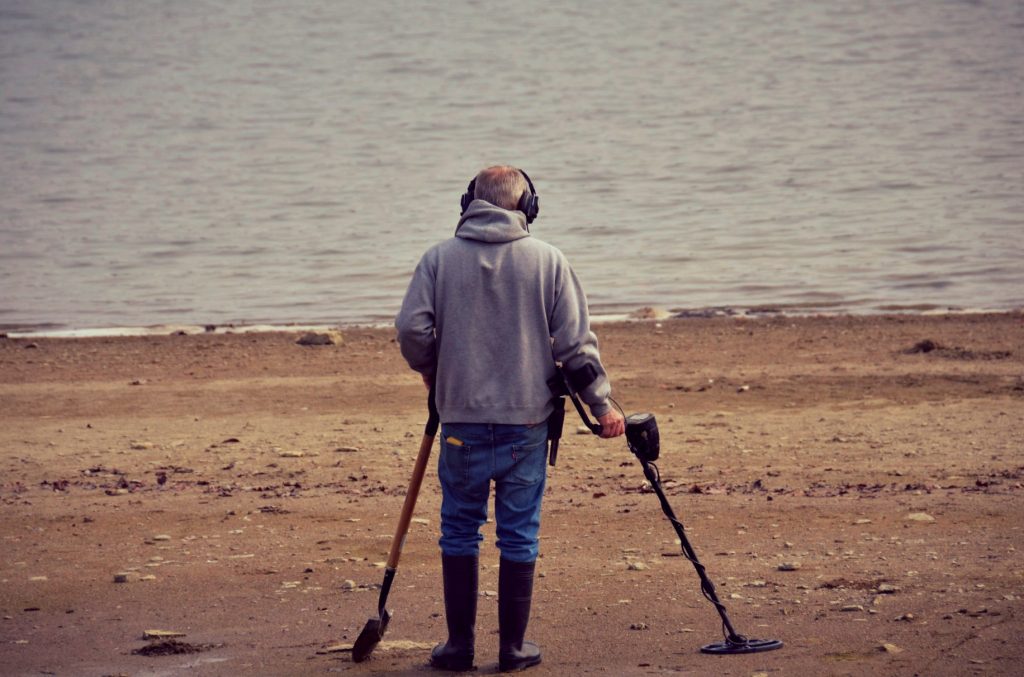The Art of Metal Detecting for Rare Coins
I. Introduction: The Allure of Metal Detecting for Rare Coins
Metal detecting is not just a hobby; it’s a journey into history, a quest for hidden treasures beneath the Earth’s surface. For enthusiasts, the thrill of discovering rare coins adds an extra layer of excitement to an already captivating pastime. In this exploration, we delve into the art of metal detecting for rare coins, highlighting specific examples of valuable finds that have captivated both detectorists and numismatists alike.

II. The Basics of Metal Detecting: Tools, Techniques, and Patience
1. Essential Tools
Metal detecting for rare coins requires the right tools. Detectorists often use high-quality metal detectors equipped with advanced features like discrimination settings to distinguish between various metals. Shovels, pinpointer probes, and digging tools are essential for excavating finds without causing damage.
2. Selecting Sites
Choosing the right location is crucial. Historic sites, old parks, beaches, and areas with a rich history are prime spots for finding rare coins. Researching local history and obtaining permissions to metal detect on private property are essential steps.
3. Techniques for Success
Effective sweeping patterns, proper ground balancing, and understanding the signals your detector provides are crucial aspects of successful metal detecting. A patient and systematic approach often yields the best results, as valuable coins might be hidden just beneath the surface.
III. Famous Finds: Stories of Numismatic Discovery
1. The Saddle Ridge Hoard (2013)
One of the most legendary discoveries in recent history was the Saddle Ridge Hoard. A California couple, walking their dog on their property, stumbled upon a cache of gold coins dating from 1847 to 1894. The total face value of the coins was around $27,000, but their numismatic and historical value was estimated to be over $10 million. The coins were in remarkable condition, raising questions about their origin and the circumstances leading to their burial.
2. The Crosby Garrett Helmet (2010)
While not a coin, the Crosby Garrett Helmet is a notable example of a remarkable discovery made with a metal detector. Discovered in a field in England by an amateur detectorist, this Roman cavalry helmet dates back to the late Roman period (around the 2nd or 3rd century AD). The helmet, though fragmented, is an exquisite piece of Roman military equipment and serves as a testament to the potential of metal detecting in uncovering rare artifacts.
3. The Frome Hoard (2010)
In Somerset, England, metal detectorist Dave Crisp made an extraordinary find known as the Frome Hoard. This cache contained 52,503 Roman coins dating from the 3rd century AD. The sheer size and significance of the hoard shed light on the Roman presence in Britain during that period. The coins were well-preserved and contributed valuable insights into the economic and political landscape of Roman Britain.
IV. Identifying and Assessing Rare Coins: A Detectorist’s Guide
1. Recognizing Valuable Signals
Metal detectorists often rely on specific signals or tones produced by their detectors to identify potential coin targets. Valuable coins may register distinctively due to their metal composition or size. Understanding the nuances of your detector’s signals is essential for successful coin recovery.
2. Research and Documentation
Once a rare coin is unearthed, thorough research is crucial. Identifying the coin’s origin, historical context, and potential rarity requires a combination of numismatic knowledge and research skills. Online databases, coin identification guides, and consultation with experts contribute to a comprehensive understanding of the find.
3. Professional Authentication
For particularly valuable or historically significant coins, seeking professional authentication is advisable. Numismatic experts can verify the coin’s authenticity, assess its condition, and provide insights into its rarity and potential market value.
V. The Code of Ethics: Respecting the Past
1. Respecting Archaeological Sites
Metal detectorists play a crucial role in preserving archaeological sites. Following a code of ethics that emphasizes responsible detecting is essential. Obtaining permissions, avoiding sensitive areas, and reporting significant finds to local authorities contribute to the broader goal of preserving historical integrity.
2. Collaboration with Archaeologists
Collaboration between metal detectorists and professional archaeologists has become increasingly common. This partnership allows for the integration of detectorists’ skills in uncovering artifacts with the scientific rigor and context provided by archaeological methods. Together, they contribute to a more comprehensive understanding of historical sites.
VI. Challenges and Considerations
1. Legalities of Metal Detecting
Metal detecting laws vary by country and region. It’s crucial for detectorists to be aware of and adhere to local regulations. Some areas, particularly those with archaeological significance, may have restrictions or require permits for metal detecting.
2. Environmental Impact
While the thrill of discovery is paramount, metal detectorists must be mindful of their environmental impact. Digging techniques that minimize disturbance to flora and fauna, along with responsible backfilling, contribute to the sustainability of the hobby.
VII. Conclusion: A Journey Through Time
Metal detecting for rare coins is more than a hobby; it’s a journey through time, an exploration that connects us with the past. The stories of exceptional finds, from the Saddle Ridge Hoard to the Crosby Garrett Helmet, underscore the transformative power of metal detecting in unearthing numismatic treasures. As detectorists traverse landscapes in search of hidden coins, they become modern-day archaeologists, contributing to our collective understanding of history one discovery at a time. Through responsible practices, collaboration with experts, and a profound respect for the past, metal detecting enthusiasts ensure that the thrill of uncovering rare coins continues to enrich our understanding of the human experience across centuries.

